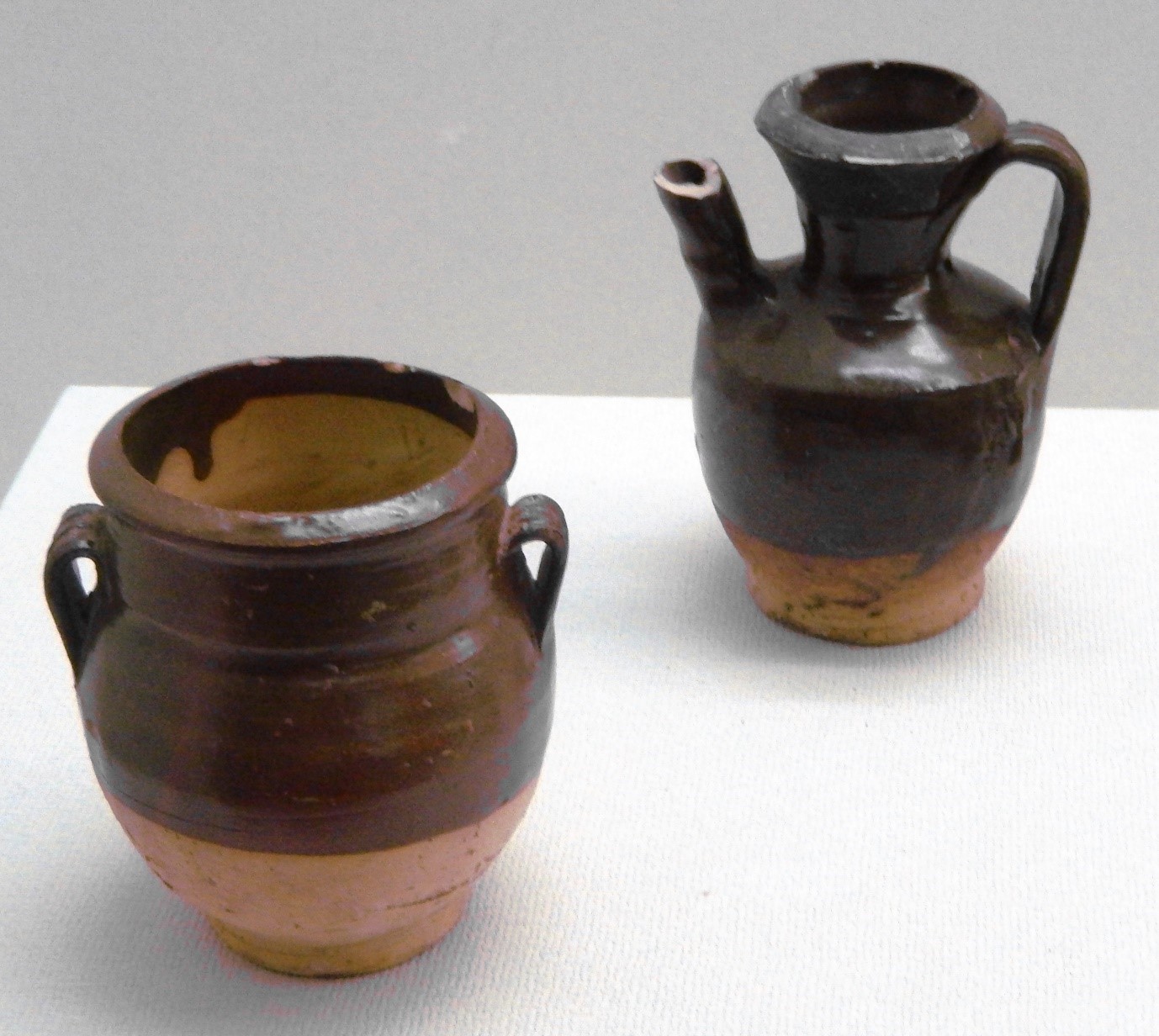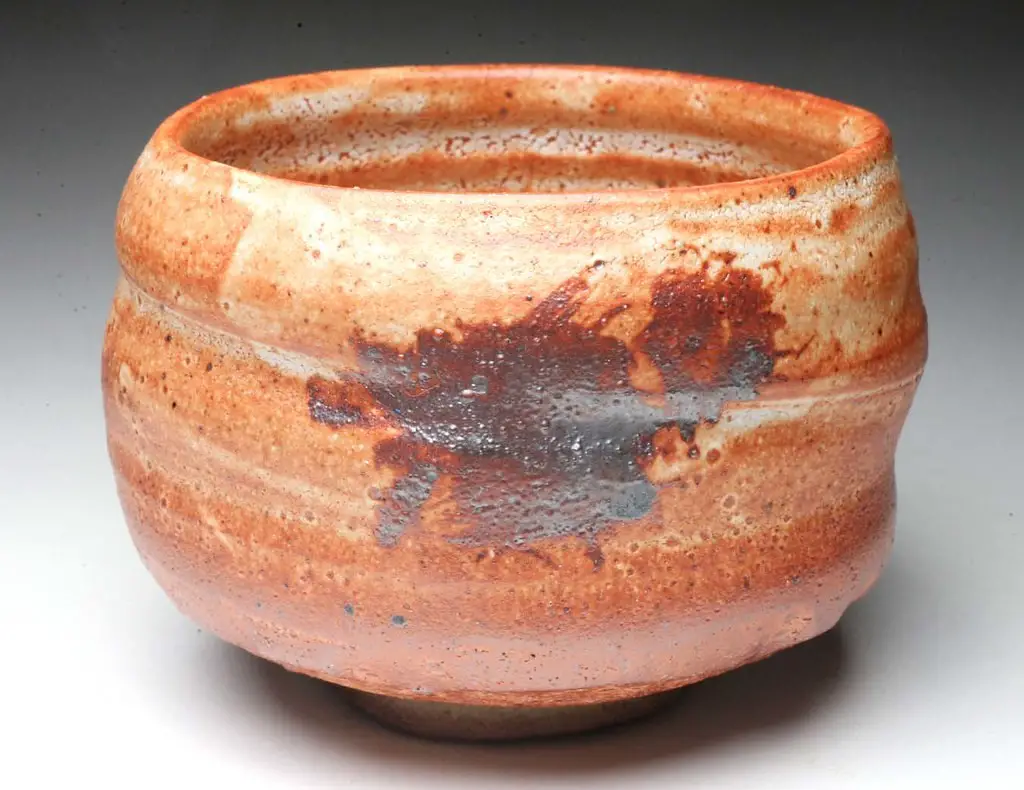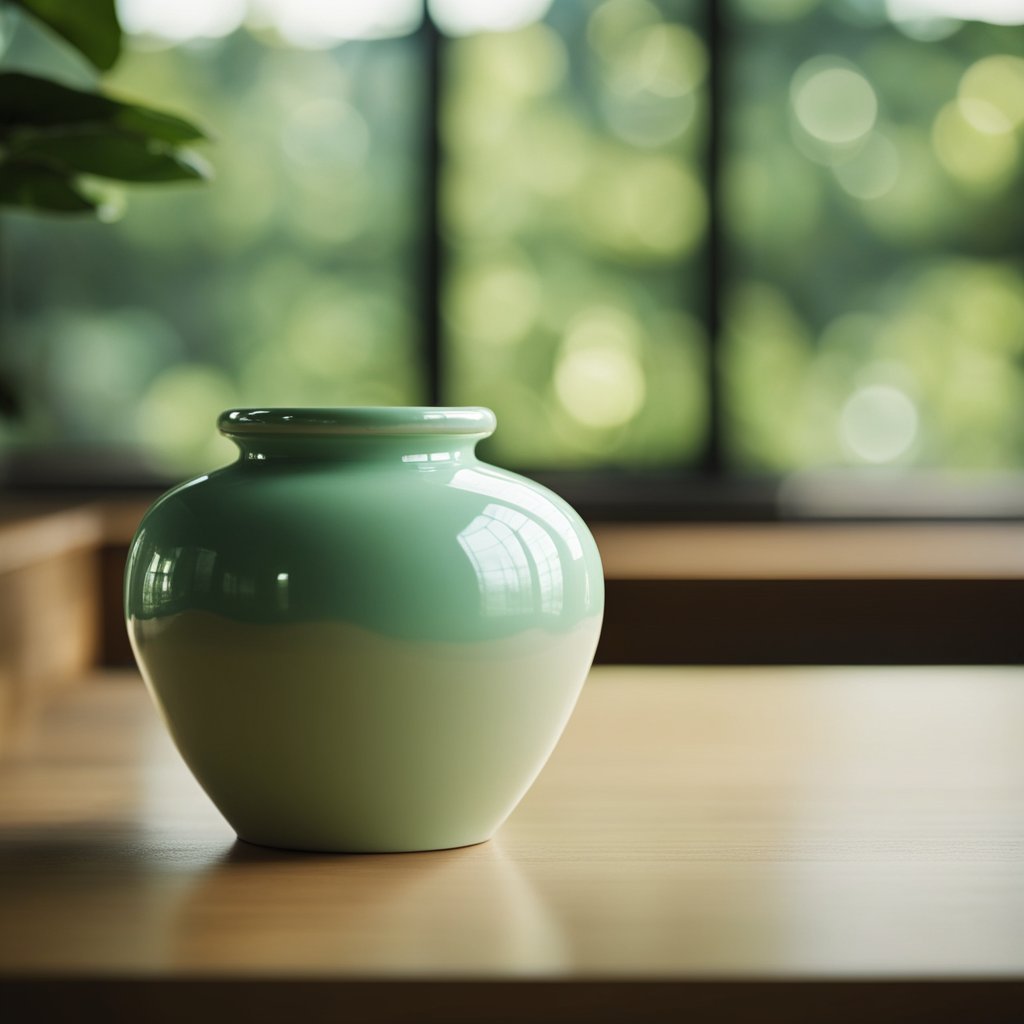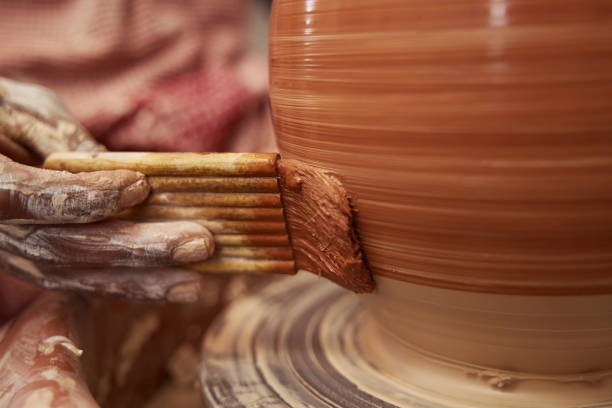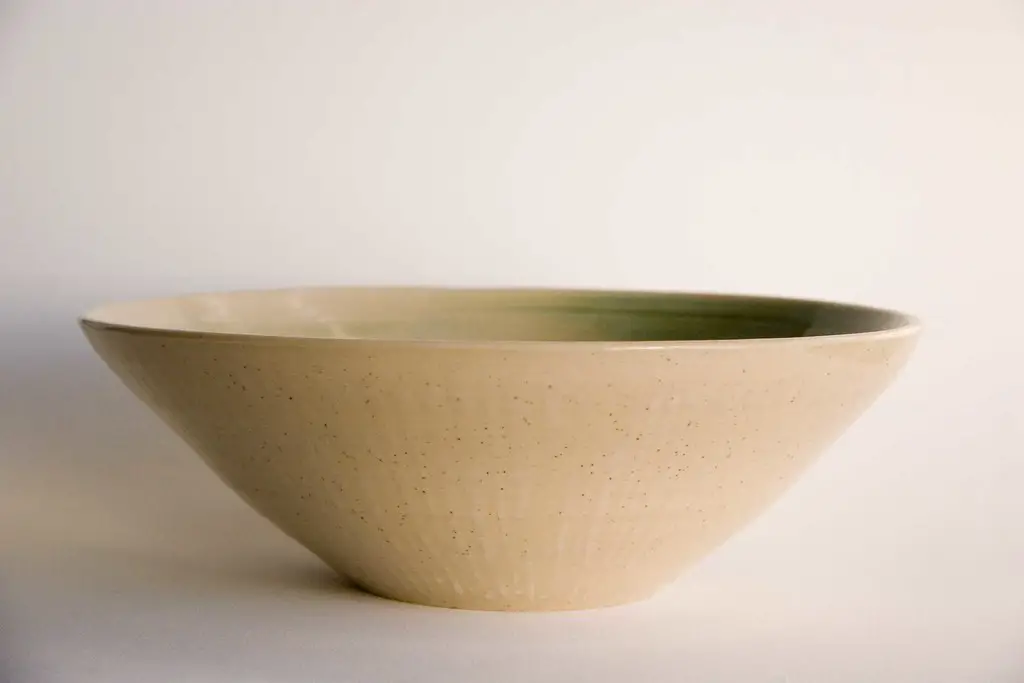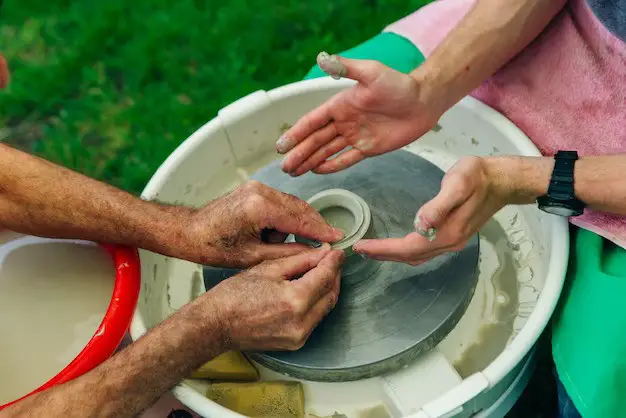Pottery kilns are important to understand since they are a big part of finishing a piece of pottery. This is how the clay and the glaze form the object that you’re making, and using the wrong one could end up creating problems later on.
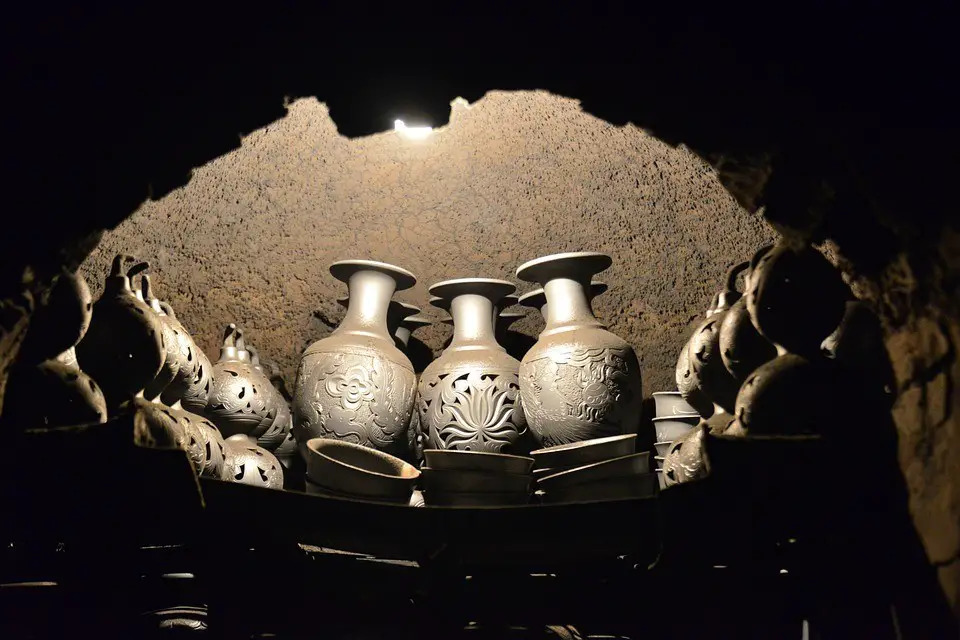
So what are kilns? What’s so important about them? Well, you’re about to find out. This post will give you everything that you need to know about pottery kilns.
Kiln Categories
There are different kiln categories, and it’s important to know what they are. They are as follows:
- The type of kiln, such as one that uses electricity, gas, propane, or wood
- Airflow, whether it’s got an updraft, downdraft, or a cross draft
- The atmosphere, whether it’s got a neutral atmosphere, an oxidation one, or a reduction one
- The material, whether it’s made of ceramic fiber, a hard brick, or a soft brick.
- The shape, whether it’s got a canary or sprung arch, has a single chamber or lots of chambers, or even if it’s in the shape of an oval or octagon. There are so many different shapes that it’s important to know about each one.
All kilns have one thing in common though: they can get super hot! Temperatures of upwards of a couple of thousand degrees are often reached in these, and they can burn the skin if you’re not too careful. You should make sure that with this, you treat your kilns with caution since it’s important not to hurt yourself.
When beginning, it’s best if you work with someone who knows what they’re doing, so that you take the necessary safety precautions, and they make sure that you don’t hurt yourself in any way that might be possible.
What are the different types of kilns though? How are they categorized? Well, keep on reading to find out more about each of the kilns that are out there.
Electric Kilns
The first kind that you’re going to use is probably electric kilns. These are the most common types of kilns, and they do have benefits for those who are beginning in pottery, they are as follows:
- They plug directly into the wall
- They’re inexpensive
- They’re accessible for small pottery designs
- They are consistent and always fire in oxidation
While the final one might not be a benefit, simply because you might want one that fires in reduction, or neutral, it is good for potters to start with.
If you’re beginning with a kiln, I highly suggest one of these, since it creates a controlled environment. What that means for you, is that you will have a much easier time controlling how the pottery is fired, so you’ll get a much better result from this.

Lots of times, these kilns are fired by a kiln sitter, which is essentially a cone that sits inside the kiln and is held by a rod and some wood. When it bends, the rod will then start to move down, and it will turn off the currents and the coils.
If you do use it in this way, you should make sure that you know of the following:
- That it’s level
- It’s calibrated periodically
- That you use a higher number to fire to the correct temperature
While you can use one of these, you also can use manual actions to turn it on and off based on what you’re seeing through the peephole. Or, you can use an electric programmer.
With all of these do make sure that you take the necessary safety precautions so that you don’t get hurt. These may be inexpensive, but they still get super hot.
Gas Kilns
The next one to discuss is a gas kiln. This is a much harder one to control in many cases, simply because these naturally work on reduction, which doesn’t create oxygen. With these, you have to take into consideration how you can add oxygen to this to create the product that you want.
Now, gas kilns do have a couple of benefits that come from it, and they are as follows:
- Can create beautiful colors
- Can yield a strong piece
However, the fact that they are hard to keep going can deter a potter from actually using one of these, since the results are very unpredictable.
If you do decide to use one of these, it’s best to make sure that you know how to use it, and that you test it with various pieces since you never know what you’re going to get with a kiln such as this.
When you fire though, you should look to try to get a neutral atmosphere with this. It’s hard, but if you’re up for the challenge, this is an option. For a beginner potter though, I don’t suggest using a gas kiln unless you have someone teaching you just how to use it.
Wood Kiln
Then there are wood kilns, which are some of the oldest kilns used. They’ve provided results for thousands of years, but, there are a few disadvantages to this. while they are a great one for potters, there are a few drawbacks to this, and they are as follows:
- They are super labor intensive since you need to constantly stroke and refuel the area so that the wood is high enough.
- It can take three times as long to create the pieces.
- Needs to be monitored during the duration of this.
However, the kiln also creates an interesting set of factors as well, and that’s what it will make its sort of glaze that happens when the wood ash does fall onto these pieces, which can create a super unique look to them. If you like the way that it looks, perhaps it’s worth the extra work needed for this.

These often take a lot more time, since you need to wash everything that you’re going to use. You also want to make sure that you’ve got the right amount of safety tools for this. It’s imperative to have a respirator on when you’re doing this since the last thing you want is to breathe this in.
You should make sure that all the pots sit on something called “wads” to help prevent them from sticking and then forming on the surface. You should glaze everything and make sure that you don’t get wood fire flashing.
With the process, it can take up to 24 hours just to get to cone 10, which is a long time, and it can be very labor-intensive. That’s why some shy away from this.
It takes on average about 3 days to get to cone 13 on the very front of this, and about 10 on everything else. It takes a long time, but the results that you get from this are worth it.
Plus, with this, you can use different types of wood fire slips and also gazes as well to make some amazing designs. It’s a process that allows for a unique texture, but just know that the process is extensive, and can be super hard. It might not be the one that you work with initially since it’s so labor-intensive.
Salt kilns
If you want a specialized type of kiln that can give some great results, why not check out Salt Kin. This is something that’s also called a soda kiln, and it’s known to create a bumpy glaze. Take a piece of stoneware that has a bumpy surface and run your hand over that, that’s a salt kiln.
How does this happen? Well, when you’re firing the piece, you introduce salt into this. From there, the heat creates a chemical reaction in there, and then, it’ll leave the residue in a sense that creates a glaze similar to the peel of an orange.
However, there is a drawback to this, and that’s what the glaze gets over everything, and that can ruin your kiln. If you are going to use this, keep in mind that it can negatively affect the lifespan of the kiln that you’re using.
This is another super old means of firing pottery. It dates back to almost 30,000 years ago, and it’s a way to fire pottery, but it does take a long time.
To do this, you essentially dig a hole in the ground, put it in the pit, and then you burn it. pit firing is almost atmospheric in a sense, meaning that whatever the atmosphere is, it can change the way that it looks.
For example, the following can happen with this:
- Anything that’s been burned turns into vapor
- The vapor reaches all pieces of the pit
- Pieces that are hot enough to have the vapor will let it in, and it will cement itself there
- If not, the rest of the pot becomes either black, gray, or white
This is a very extensive process, but you can do this on a variety of different surfaces, including the following:
- In a giant hole in the ground
- In an oil drum
- In any surface that can house combustible materials
With this type of firing, you want to make sure that you watch out for lining the pit as well since while it can insulate it, it can also cause cracks and breaks, and there is a chance that it can explode.
This type of pottery firing is rarely used, but it is kind of a “kiln” in a sense, and it does the job relatively well. If you’re interested in learning, it does create some unique pieces, and it might be something worth trying if you ever get curious.
Raku firing
Raku is another type of firing that dates back to 16th century Japan. It’s a form of firing art, and it involves controlling the oxygen that you put into the pit during the color formation. You want to deprive and overdose the area, and it will force the area to change colors.
There are various benefits to this, and they are as follows:
- You are involved, so you have more connection to the piece
- You can get bright, metallic colors from this
- You can get some cool crackling effects from this as well
- It’s low-fire, which means you can focus more on the design
Because it is a low-firing one, it’s best if you don’t make it for some outside item, since that means it’s more susceptible to breaking.
This pottery is often bisque-fired, which means that it’s fired at a very low temperature, and it takes very little time, however, in some pieces, it can take up to several hours depending on what you want.

This differs from other types of firing and kilns because typically, you can use a conventional kiln to do this, and it follows the rules of pottery way more, whereas pit firing and other types of firing can be considered more “primitive” and the glazes aren’t used as much, and the kiln is much more unrefined.
With raku, you need to make sure that you bisque-fire, since it will help you keep the shape of the piece as well. The ideal kilns for this are those that can easily access the piece, despite the higher temperature. An Olympic raku kiln does the job pretty well. you should make sure that when the piece is finished firing as well, you remove it while it’s still hot, not letting it sit on the rack as well.
Some people don’t even need to get a special kiln for this one, for you can simply use an old garbage can with some newspapers and other combustible materials inside.
What fuel to use
Is there a specific type of fuel that you should use with pottery kilns? The answer is that it depends on what you’re using.
For example, with wood firing, you want to have wood inside of it. but, other combustibles will help you make sure that you maintain the flame as well. It’s important to consider that you can use others.
With newspapers, do be careful with them, because the inking from this when you burn it can get onto the piece as well. It might end up making the piece look better than you imagined, and it can help to create a good, unique item.
The combustion that you use can affect how a piece looks and could play a major part in what type of kiln you want to include.
Atmosphere Matters
Another important thing to remember is that the air around the pottery can affect the way the piece looks. Various types of firing do have atmospheric factors, and they are as follows:
- Pit firing
- Saggar firing
- Raku firing
- Salt/soda firing
- Wood Firing
If you’re using any of these it’s important to realize that the atmosphere can affect how the pottery piece looks.
It’s not just the air, how much oxygen or lack thereof is in it, but it’s also what you have in the air. You might create a great wood-firing kiln that has a lot of oxygen going on, but, if you’re trying to prevent certain colors from coming in, you have to watch what you burn. With wood firing, you should focus solely on wood in the kiln, since this will create wood ash, and that will create the texture that you want. In that case, you want to have the air filled with wood ash.
With salt and soda firing, you’re using gas, and then the salt or soda is put into there, so you want to make sure that you do two things:
- Follow the schedule
- Add the salt whenever, and know how much
- Know when to raise the temperature
If you don’t do this, it can prevent the results from being consistent, and it can affect the overall look of this.
What’s in the air matters as well. If you’re fired with different atmospheres, it can affect the overall consistency of the wood, regardless of what you’re doing with it in terms of the type of kiln. If you fire it with wood, it can create less consistent designs, and it can create different colors.
In the case of firing with salt, you can create a richer and more complex texture to it. The ash that’s in it as well can make a huge difference as well.
The type of kiln that you fire can make a big difference as well. For example, if you wood fire stuff, you actually can dramatically change the atmosphere, virus when you gas fire it, it creates almost a runnier texture to it, and it doesn’t make it as rough. It can affect its smoothness of it as well.
If you do a heavy reduction as well, you actually can create an interesting patterned design. If you want to create something unique, this can make a huge difference.
Just remember though, with a reduction firing, it can end up changing the consistency of the piece, thereby making it harder for it to stand together. But, an oxidation atmosphere, can also change this. The best way to determine what type of kiln and atmosphere you want to use is just to experiment and play around with it to see if you like one over the other.
How to Choose
There are a couple of factors that you will want to consider if you do get a kiln, and they are as follows:
- Either gas or electric
- The right size
- How do you want to control it?
With kilns, you want to start with either electric or gas. Either one of those is a good starting point. Electric is probably your best option, but gas can be used for Raku firing, and there are different types as well to check out.
The right size is a huge part of it as well. If you’re going for small parts, you want one that’s 9×11.
For those that want something that’s used every so often, without too much use from it, get an 18×18 one.
If you’re going to be using it for a few pieces at a time, get a 23×27.
Finally, if you’re going to be making a lot of them, you should get a 29×27. That’s tough if you’re doing this as a job and need a larger kiln to produce more pieces.
Finally, you want to choose the control options. You’ve got either manual or electric. The manual typically comes with a kiln sitter, which has a timer on it as well. It’s more your responsibility in that case.
For electricity, you essentially program it, and then you leave it. It then has programmed temperatures to give an optimal result, and it will help you slow down the hiring process if you so need it.
Electric is usually the way to go, and if you’re the type who doesn’t want to sit there and watch a piece for hours on end, start with that. They’re pretty versatile, and they’re available.
You might want to get both, and if that’s the case, then great. There is an option for that if you so desire but do take the time to learn the manual option because it can take a bit to master.
With a kiln, you want to choose the one that’s right for you. With the right option, you’ll be able to create a great piece that works for your firing. Do take the time to learn, and ideally, get an electric one. A kiln plays a huge role in the firing of pottery, and it’s how you manage to create pieces that have a great shape to them and a piece that will make things work well for what you’re going to do with it. It’s fun to experiment with this too.
If You Enjoyed This Article Please Share and Pin it. It is Greatly Appreciated. 🙂



